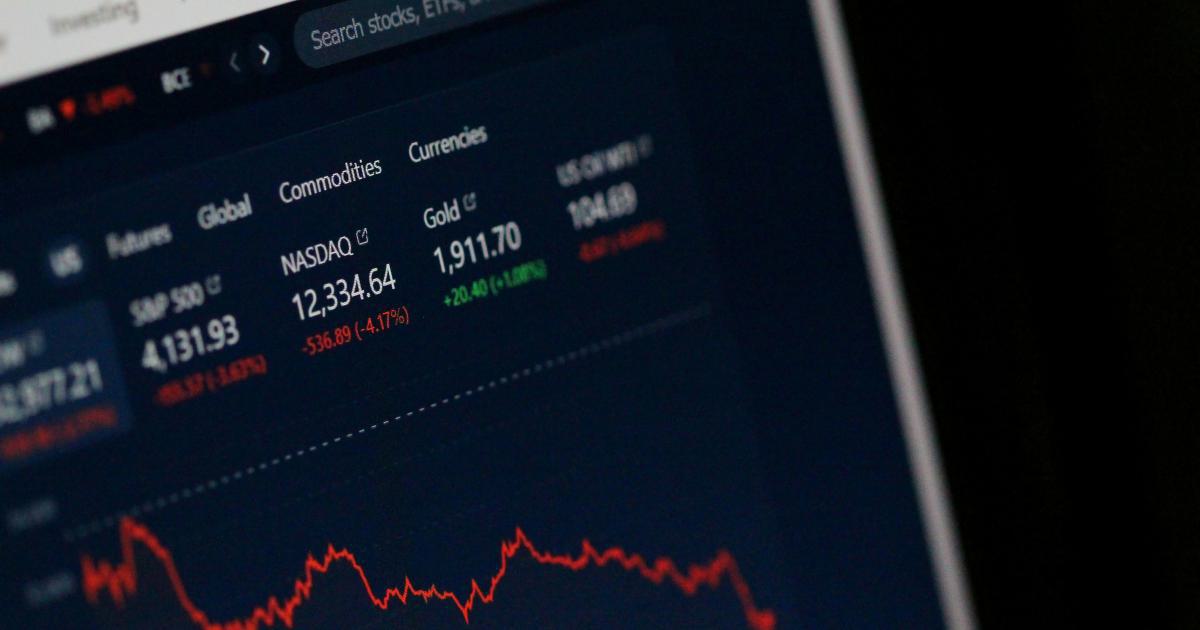5 Proven Trend Following Trading Strategies You Must Try

In today's dynamic financial markets, mastering trend following trading strategies can be the key differentiator between average performance and exceptional trading results. Within the first 100 words, it is crucial to understand that employing trend following trading strategies not only aids in identifying momentum but also offers traders systematic approaches to capitalize on market trends. Whether you are a seasoned investor or a novice stepping into the world of technical analysis, understanding these methods is central to building a resilient trading toolbox. This article will delve into five proven strategies designed to help you grasp market direction, mitigate risks, and ultimately enhance your trading performance through actionable insights and real-world examples.
Trend following trading strategies work on the principle that markets tend to move in sustained trends. By analyzing market data, price actions, and key technical indicators, these strategies allow traders to make informed decisions that capture the market’s momentum. In this extensive guide, we will explore each method in detail, explaining the underlying techniques, practical applications, and potential pitfalls. Each section is structured to offer a comprehensive analysis so that both novices and professional traders can leverage the insights to refine their approach.
We begin by setting a solid foundation with an introductory overview of trend analysis and market behavior. Understanding market trends is essential because trends are the lifeblood of profitable trading. Trends can last days, weeks, months, or even years, and aligning your strategy with the prevailing market trend can significantly amplify gains. The strategies discussed here are not merely theoretical constructs; they are time-tested techniques with proven success histories among elite traders. In the subsequent sections, we will explore each strategy with detailed examples, illustrative case studies, and clear, actionable steps recommended by experts in the field.
Understanding Trend Following Trading Strategies
Trend following trading strategies are anchored in the belief that past price movements can help predict future market directions. They are built around the analysis of various technical indicators that signal when to enter or exit trades. At their core, these strategies rely on tools like moving averages, breakouts, momentum indicators, price patterns, and volatility measures. In-depth understanding of these elements is crucial, as it forms the basis for developing robust trading systems.
In essence, a good trend following strategy should provide traders with:
- The ability to capture large market moves
- A clear set of rules for trade entry and exit
- Effective risk management techniques to minimize losses
Moreover, this type of strategy encourages patience and discipline—qualities that are vital for long-term success in trading. Let’s delve deeper into each of the five strategies that have been rigorously tested and proven effective across different market scenarios.

Strategy 1: Moving Averages Crossovers
One of the most popular and time-tested trend following strategies is the use of moving averages crossovers. Moving averages, such as the Simple Moving Average (SMA) or the Exponential Moving Average (EMA), smooth out price data to help traders identify the direction of the trend. The crossover strategy involves using two moving averages—one short-term and one long-term. When the short-term moving average crosses above the long-term moving average, it is seen as a bullish signal. Conversely, when it crosses below, it suggests a bearish trend.
How the Moving Averages Crossover Works
The process behind moving averages is relatively straightforward. A short-term moving average (for instance, the 50-day SMA) is more sensitive to recent price movements, while a long-term average (like the 200-day SMA) reflects a more stable trend over time. The crossover of these two averages provides a clear signal:
- Bullish Signal: The short-term average crossing above the long-term average indicates that recent prices are rising faster than the longer-term price trend. This crossover signals potential upward momentum.
- Bearish Signal: On the other hand, when the short-term average crosses below the long-term average, it indicates that the pace of rising prices has slowed, hinting at a potential reversal to a downtrend.
Real-World Application and Case Studies
Institutions and independent traders alike have incorporated moving averages crossovers into their trading routines. For example, during the bullish market surge observed in recent years, many traders have successfully used the 50/200 SMA crossover to time their entries and exits in technology stocks. One case study involved a trader who applied the crossover strategy on a well-known tech giant. By monitoring the 50-day and 200-day SMAs, the trader managed to capture a significant upward movement before the market corrected later.
Another real-world example is during market corrections or crashes; the same strategy can warn traders early on to minimize losses by exiting positions when the moving averages signal a reversal. However, traders must always combine the moving averages strategy with other risk management tools, such as stop-loss orders, to shield themselves from sudden market reversals that might result in heavy losses.
Best Practices and Expert Tips
Use multiple timeframes: Confirm signals on both daily and weekly charts to filter out false positives.
Combine with other indicators: Utilize volume indicators or momentum oscillators to validate crossover signals.
Customize your averages: Depending on the asset and its volatility, adjust the period lengths to better fit the price action.
Regularly review past performance: Backtest the strategy on historical data to ensure its reliability under various market conditions.
While moving averages crossovers provide a structured approach, it’s important to note that the effectiveness of this strategy can vary with market volatility. During periods of low volatility, the signals might lose their predictive power, making it essential to consider supplementing this strategy with additional technical analysis.
Strategy 2: Breakout Systems
Breakout systems are another cornerstone trend following trading strategy that capitalizes on the moments when asset prices break through defined support or resistance levels. These breakouts are often precursors to strong trends, offering traders a window of opportunity to ride the wave of a significant price movement.
The Mechanics Behind Breakout Trading
Breakout trading involves identifying key levels where a price has repeatedly encountered resistance or support. When the price finally breaches this level with increased volume, it is often a sign of a strong directional move. The breakout can occur in either direction:
- An upward breakout, where the price surges above a resistance level, suggests the onset of a bullish trend.
- A downward breakout, where the price falls below a support level, signals the beginning of a bearish downturn.
Traders deploy technical tools such as trendlines, horizontal levels, and chart patterns (e.g., triangles, rectangles) to pinpoint these critical thresholds. Additionally, volume is a crucial indicator; a spike in trading volume during a breakout significantly enhances the validity of the signal.
Implementing a Breakout Strategy
To effectively implement a breakout strategy, traders should:
- Identify key levels by analyzing historical price charts.
- Set entry points just above resistance levels for bullish breakouts and just below support for bearish ones.
- Utilize stop-loss orders to manage potential false breakouts, which are not uncommon.
- Monitor volume closely to confirm the strength of the breakout.
One practical example of breakout trading occurred in commodity markets. When oil prices approached a historically strong resistance level, a surge in trading volume accompanied a bullish breakout, alerting traders to the potential for a sustained upward trend. By entering early and managing risk appropriately, traders were able to capture significant gains.
Advantages and Disadvantages
While breakout strategies are effective, they come with their set of challenges:
- Advantages:
- Clear entry and exit signals based on well-defined levels.
- Potential for significant gains when the breakout leads to a strong and sustained trend.
- Disadvantages:
- Susceptibility to false breakouts that can trigger premature entries.
- Requires constant monitoring of volume and market conditions.
As always, pairing breakout strategies with other technical indicators, such as trend strength measures and oscillators, helps in filtering out misleading signals, ensuring greater overall strategy reliability.

Strategy 3: Momentum-Based Trend Following
Momentum trading is a subset of trend following trading strategies that focuses on the strength of a price movement. The idea is simple: once a trend is recognized, the asset's price tends to continue moving in that direction given enough momentum. By understanding and measuring momentum, traders can time their entries more accurately and ride the trend while it is at its strongest.
The Role of Momentum Indicators
Momentum indicators such as the Relative Strength Index (RSI), Moving Average Convergence Divergence (MACD), and On-Balance Volume (OBV) help quantify the strength of a trend. When these indicators show significant movement upward or downward, they provide confirmation of the trend's strength, allowing for smarter trade decisions. Here’s how:
- RSI: Measures the speed and change of price movements and can signal overbought or oversold conditions. Typically, an RSI above 70 might indicate that the asset is overbought, while below 30 suggests oversold conditions.
- MACD: Shows the relationship between two moving averages of a security’s price. A crossover in the MACD line and the signal line often reinforces the strength of an uptrend or downtrend.
- OBV: Accumulates volume data to track the flow of money. Increasing OBV coupled with rising prices typically signals strong buying interest, enhancing the validity of an ongoing trend.
Application in Real-World Trading
Momentum-based trend following has been integral in markets characterized by rapid changes, such as technology stocks and cryptocurrencies. For example, a trader identified a sharp price movement in a leading cryptocurrency by observing a combination of RSI and MACD. The momentum indicators clearly supported the bullish trend, providing confidence to scale into the position gradually.
One notable case study involved a momentum trader during an earnings season. As major companies released stronger-than-expected earnings reports, the corresponding positive momentum was confirmed through technical indicators. Traders using this strategy managed not only to catch the upward swing but also employed tight stop-loss orders to safeguard against sudden reversals.
Step-by-Step Guide to Utilizing Momentum
Choose a momentum indicator (or a combination) that aligns with your trading style.
Identify key thresholds for overbought and oversold conditions to guide entry and exit points.
Monitor trading volume alongside momentum indicators to ensure reliability.
Backtest the momentum strategy on historical data to ascertain its predictive power.
Use trailing stops to lock in gains while letting the trend run.
Momentum-based trend following strategies are particularly effective in catching explosive moves in volatile markets. However, they require constant monitoring and may generate more frequent trading signals, which necessitates robust execution and sound emotion management. By combining momentum with other analytical tools, traders can create a balanced approach that yields long-term benefits while minimizing trading fatigue.

Strategy 4: Price Action Patterns
Price action remains the purest form of technical analysis and is one of the most insightful trend following trading strategies. Unlike strategies that rely heavily on indicators, price action focuses on the raw price movements and patterns created on the chart. This method allows traders to make decisions based directly on market psychology and supply-demand dynamics.
Key Price Patterns and Their Significance
Certain patterns stand out as particularly effective for identifying trends. These include:
- Head and Shoulders: Often indicates a reversal when the price breaks the neckline.
- Double Tops and Bottoms: Suggest reversals when the price fails to break an important level.
- Flags and Pennants: Represent brief periods of consolidation before the trend resumes.
- Triangles: Ascending, descending, and symmetrical triangles can indicate continuation or reversal based on context.
Each of these patterns provides clues about potential future price movements. For example, when a head and shoulders pattern forms after an uptrend, it may signal that the bullish trend is exhausting itself, prompting traders to prepare for a reversal. Conversely, continuation patterns like flags or pennants indicate that despite minor corrections, the underlying trend remains intact.
Integrating Price Action into a Trend Following Strategy
To successfully integrate price action into your trading strategy, consider the following steps:
Develop a keen eye for identifying key chart patterns by consistently reviewing historical price charts.
Use multiple time frames to support your pattern recognition—what appears as a reversal in one time frame may be a minor correction within a larger trend in another.
Combine price patterns with volume and other indicators to filter out false signals.
Set clear entry and exit rules based on the completion of the identified patterns, ensuring a disciplined approach even when emotions run high.
Real-world applications of price action strategies have been seen in currency markets (Forex), where chart patterns reliably indicate potential inflection points. Forex traders often use price action analysis to time their trades during high volatility periods, such as Asian or European session overlaps. An experienced trader might spot a series of lower highs following a decisive breakout, signaling the end of an uptrend and the start of a downtrend.
Advantages of Price Action Trading
The primary advantages of price action include:
- Clarity: Direct observation of price movements without the noise from lagging indicators.
- Flexibility: Can be applied across multiple assets and timeframes.
- Cost-effectiveness: Requires minimal technical tools beyond charting software, making it accessible to all levels of traders.
However, price action trading demands a deep understanding of market psychology and consistent practice. It is less formulaic compared to moving averages or momentum-based strategies, which can sometimes make the decision process more subjective. Nevertheless, many seasoned traders consider price action as an indispensable part of their overall trading arsenal.
Strategy 5: Volatility Adjusted Trend Following
The final strategy integrates volatility adjustments into traditional trend following trading strategies. Financial markets are inherently volatile, and adjusting one’s approach to account for changing levels of volatility can lead to more optimized performance. By calibrating your trading rules based on the observed market volatility, you can avoid prematurely exiting profitable trades or staying too long in declining positions.
Understanding Volatility and Its Role
Volatility measures the degree of variation in a trading price series over time, often calculated using indicators like the Average True Range (ATR) or standard deviation. When volatility increases, price swings become larger, which may necessitate wider stop-loss levels and adjusted position sizing. Conversely, in low volatility markets, tighter controls might be more appropriate. A volatility-adjusted trend following strategy helps traders determine when to widen or contract their safety nets to capture trends effectively.
How to Implement Volatility Adjustments
A practical way to integrate volatility into your strategy includes:
Calculate the ATR for the asset to understand its recent volatility.
Adjust your stop-loss orders based on a multiple of the ATR to avoid getting stopped out by normal price fluctuations.
Modify position sizes using volatility metrics to ensure that exposure remains consistent with your risk tolerance.
Combine these measures with established trend indicators to fine-tune entry and exit points.
For example, during a period of elevated volatility, a trader using a moving average crossover might widen the stop-loss distance to ensure that normal fluctuations do not trigger an exit, thus aligning the risk management strategy with market conditions. Historical backtesting has shown that traders who incorporate volatility adjustments can often reduce false signals and improve overall profitability.
Advantages and Practical Considerations
Volatility adjusted trend following strategies offer the following benefits:
- Enhanced risk management: By dynamically adjusting to market conditions, traders can better manage risk without sacrificing potential gains.
- Reduced whipsaw: Adjusting stop-loss levels based on volatility can help avoid being prematurely exited during market noise.
- Flexibility: This strategy can be layered on top of other trend following systems, making it a versatile add-on.
However, implementing volatility-based adjustments requires a high level of discipline and a reliable data source. The complexity of monitoring real-time volatility metrics and adjusting trading parameters on the fly means that traders must be well-versed in both technical analysis and risk management principles.
By including volatility as a key parameter, traders can design more adaptive strategies that respond to the markets' dynamic nature. This approach is particularly beneficial in today’s fast-paced trading environment where upheavals can occur suddenly. Integrating volatility metrics not only optimizes entries and exits but also improves the overall robustness of a trend following trading strategy.
Integrating and Backtesting Your Strategies
No strategy is complete without rigorous backtesting and a definite integration plan. Each of the trend following trading strategies discussed has its own benefits and risks. However, the true test comes from consistently applying the method over various market periods and conditions.
Steps for Effective Backtesting
Collect historical price data for the asset class or market you wish to trade.
Apply your selected strategy rules to the data, noting down the entry and exit points.
Measure key performance metrics such as win rate, risk-to-reward ratio, drawdown levels, and overall profitability.
Adjust the parameters (e.g., moving average lengths or ATR multipliers) based on the backtesting results to optimize performance.
Validate the strategy on out-of-sample data to ensure that the model is robust and not overfitted.
Backtesting not only reveals the potential strengths of a trading system but also uncovers areas that require refinement. Many successful traders spend considerable time fine-tuning their strategies using historical data before committing real funds to enhance their confidence in managing live trades.
Combining Strategies for Enhanced Performance
While each strategy offers unique advantages, blending techniques can often lead to more robust outcomes. For instance:
- A trader might use moving averages to determine the primary trend and volatility adjustments to fine-tune risk management.
- Price action and breakout strategies can be combined to provide both a macro and micro view on market trends.
- Momentum indicators can serve as supplementary confirmation for breakout signals, thus filtering out noise and reducing false entries.
Such integration not only diversifies the analytical perspective but also makes the overall trading strategy more adaptable to changing market conditions. It’s important to maintain a trading journal where all trades are documented and reviewed. This habit allows traders to reflect on their decision-making process, continually learn, and improve.
Risk Management and Emotional Discipline
Even the best-developed trend following trading strategies are subject to the whims of the market. This is where risk management and emotional discipline come into play. A well-crafted trading plan should always include risk management measures such as:
- Defining maximum loss per trade
- Using stop-loss and take-profit orders
- Diversifying across asset classes
- Adjusting position sizes according to risk tolerance
Emotional discipline is equally important. Greed, fear, and overconfidence are common pitfalls. By sticking to predetermined rules, and by not letting emotions dictate trades, traders can build a resilient mindset that supports long-term success. Trading journals, automation of trade entries, and limit orders help reinforce disciplined trading behaviors.
The integration of risk management into trend following trading strategies transforms them from mere technical frameworks into comprehensive systems capable of withstanding market uncertainties.
Conclusion and Final Thoughts
The financial markets continuously offer opportunities, and employing well-researched, proven trend following trading strategies can make a significant difference in performance. From moving averages crossovers to volatility adjusted approaches, each method discussed here has been tested and refined over years of market observation and trading expertise.
Successful trading demands constant refinement. The strategies outlined in this article are not static; they evolve with market conditions and should be adapted and re-evaluated regularly. Whether you choose a single method or combine several for a hybrid strategy, the key lies in consistent application, disciplined risk management, and ongoing learning.
As you embark on applying these techniques, remember that backtesting, continuous improvement, and adherence to risk management guidelines are non-negotiable components of a successful trend following trading strategy. The journey might be challenging, but the rewards for those who master these methods can be substantial. Harness these insights, fine-tune your approach, and navigate the markets with confidence.
Happy trading and may your strategies lead you to greater profits!
Unlock the Power of Crypto Trading with Binance
Tired of missing out on lucrative trading opportunities? Elevate your game with Binance, the leading crypto exchange trusted by millions worldwide.
With lightning-fast execution, institutional-grade security, and a user-friendly interface, Binance empowers you to seize market moves with confidence. Plus, enjoy access to 100+ cryptocurrencies and cutting-edge tools. Join now and experience the future of trading.
Unmatched Trading Power with Binance
Are you ready to take your trading game to new heights? Binance offers a cutting-edge platform for seamless cryptocurrency transactions.
With lightning-fast execution, top-tier security, and a vast selection of coins, you'll have all the tools you need to maximize your profits. Join now and experience the future of trading.


